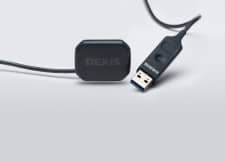The ADA updated its radiographic safety guidance, saying that it no longer recommends thyroid collars during radiographic exams.
In a significant update to its recommendations, the American Dental Association (ADA) announced that thyroid collars, once considered standard practice during radiographic exams, are no longer recommended for patients.
The new guidelines were developed by an expert panel established by the ADA Council on Scientific Affairs and published in The Journal of the American Dental Association. They emphasize the importance of considering diagnostic needs before taking radiographs to enhance patient care and minimize radiation exposure.
The findings highlight that the use of thyroid and abdominal shielding during dental imaging is no longer considered necessary, and recommended their routine use should be discontinued. The panel found that modern digital radiography equipment, combined with restricting the X-ray beam size to the specific area of interest, has been proven to offer effective protection against radiation exposure to other parts of the body.
Conversely, lead aprons and thyroid collars can obstruct the beam, resulting in the need for additional radiographs. The updated recommendations stress the importance of ordering radiographs judiciously to minimize both patients’ and dental professionals’ exposure to ionizing radiation.
The guidelines are aligned with recent guidance from the American Academy of Oral and Maxillofacial Radiology. They apply to all patients, regardless of age or health status, including pregnant individuals.
Key recommendations include ordering radiographs only when needed, utilizing digital radiography instead of conventional film, restricting beam size, ensuring proper patient positioning, incorporating CBCT only when lower-exposure options are insufficient, and adhering to all applicable federal, state, and local regulations on radiation safety.
“The central point of these recommendations is that clinicians should order radiographs in moderation to minimize both patients’ and dental professionals’ exposure to ionizing radiation,” said ,” said Purnima Kumar, DDS, PhD, professor of dentistry and chair of the department of periodontology and oral medicine at the University of Michigan School of Dentistry and chair of the ADA Council on Scientific Affairs. “We encourage dentists and their teams to review these best-practice recommendations, comply with radiation protection regulations and talk with their patients about any questions or concerns before ordering dental imaging.”
Photo 135096318 © Snowingg | Dreamstime.com









